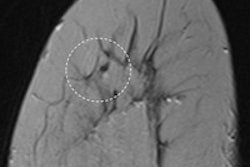
Errors in imaging studies sent to PACS represent a high clinical risk, and an efficient, effective, and safe system needs to be in place to initiate action, delegates heard at last week's U.K. Radiological Congress (UKRC). Data related to amendments can be stored and analyzed to identify trends and training needs.
High volume and intensive workloads mean that regardless of safety-net systems, errors can occur, according to Katie Pickles, quality/governance coordinator, and colleagues at the Mid Yorkshire National Health Service (NHS) Trust in Dewsbury, U.K. This is particularly relevant where information is recorded and this requires reconciliation of records and images.
Around 0.35% of studies sent to PACS require remediation due to incorrect patient name, incorrect marker, and rejected studies, according to research conducted last year by A. Nikrosi et al (Radiologica Medica, 2015, Vol. 120, pp. 498-503), she explained.
In 2014, radiology staff at the Mid Yorkshire NHS Trust implemented Q-Pulse, a quality management system that was intended initially to store documents and staff training records. Pickles and her colleagues found the "nonconformance" module could be used to solve the problems with PACS changes. They amended the module, adding a new wizard for changes that took the user through a series of questions, allowing a new, robust PACS changes system to emerge.
"All errors and changes are completely auditable and learning actions can be raised," Pickles pointed out. "If an error is identified, the user logs in the Q-Pulse, which is available on all PCs in the department. They select the correct module and raise a new nonconformance. This takes them into the wizard that guides them through the process."
Since March 2014, 600 changes have been processed via Q-Pulse. A total of 427 (71%) changes were raised by plain film, 67 (11%) by ultrasound, 63 (11%) by dual-energy x-ray absorptiometry, 31 (5%) by CT, seven each (1.2%) by MRI and interventional radiology and fluoroscopy. The majority of changes related to images sent to PACS and images saved to the wrong anatomical side.
Previously the Mid Yorkshire NHS Trust used a paper form to capture information about PACS errors. This would be sent by a fax machine to the radiology systems team to make the necessary changes. The radiology team would then contact the staff member to check that the amendments were complete.
There were flaws in this process, however. Using fax machines as a communication method is outdated, and many messages did not reach the radiology team. This led to cases where incorrect images were left on the PACS for an unacceptable length of time. Furthermore, paper records were unavailable to the wider team to resolve immediate actions, and there was no audit trail to show where and when the breakdown in communication occurred, meaning learning was neither identified nor shared.
Since the introduction of the new process, Pickles et al have analyzed trends every three months, and on five occasions there were useful learning outcomes.
"We all make mistakes, but perhaps the biggest mistake we could make is not to learn from them," noted Dr. Paul Spencer, chair of the READ (Radiology Events and Discrepancies) project, and a consultant radiologist at the Rotherham NHS Trust, South Yorkshire, in a previous article in AuntMinnieEurope.com. "It is our responsibility to recognize them, discuss them, learn from them, develop prevention strategies, implement these strategies, and finally test them for effectiveness."
 We must learn from our mistakes, Dr. Paul Spencer said.
We must learn from our mistakes, Dr. Paul Spencer said.
A great deal has been learned about how to design work environments to minimize the occurrence of errors and their consequences -- much of this from the aviation industry, he continued.
"Safety has to be institutionalized. We need to build in an acceptance that error does not mean negligence, and individuals need to be free of the fear of embarrassment by colleagues, patient reaction, or litigation," Spencer wrote. "Shared learning can help bring an objective evaluation of what went wrong, along with support from colleagues and sometimes patients."
READ is organized by the Royal College of Radiologists (RCR), and is designed to encourage learning from events/discrepancies, with the main aim of promoting improved patient safety. The aim is to continuously develop the project as a key learning tool to support best practice, and the organizers urge radiologists and trainees to submit safety-related cases that may be diagnostic or interventional events, technical or maintenance issues, regulatory or procedural aspects, or unsafe practices/protocols.
Continuing professional development (CPD) points are awarded to authors of published cases (three CPD credits for lead author only), and READ material can also be used in revalidation/CPD portfolios to show evidence of reflective practice (one CPD credit per hour can be claimed). To submit a case, send an email to [email protected].



















